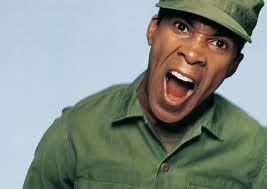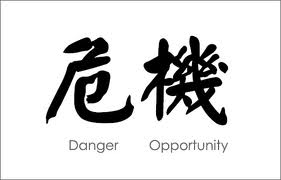 In case you didn’t tune in on Monday or Tuesday, please know that I am dedicating all of this week’s blog posts to the 2012 annual campaign planning process, and I’m putting it all to music just for the fun of it. Today’s post focuses on constructing your campaign’s case for support (aka case statement).
In case you didn’t tune in on Monday or Tuesday, please know that I am dedicating all of this week’s blog posts to the 2012 annual campaign planning process, and I’m putting it all to music just for the fun of it. Today’s post focuses on constructing your campaign’s case for support (aka case statement).
Cue the music . . . click here for your first musical selection then start reading. 🙂
I think it is important to start off by saying there are many different ‘schools of thought’ about what is and is not a case statement (aka case for support). However, when it is all said and done, I don’t think it matters in which camp you find yourself. It is far more important to be in a camp and in possession of a powerful case statement by the time you complete your annual campaign planning process.
Ann Fitzgerald of A.C. Fitzgerald & Associates does a nice job explaining what a case statement is when she says:
“The case for support, or case statement, is a marketing and fundraising tool that explains in an urgent and compelling manner why someone should support the campaign. It answers the prospective donor’s questions about the nonprofit organization, the project and the cost. And it does so in a way that connects the donor emotionally to a grander vision.”
On Ann’s website, she does a nice job of channeling Tom Ahern’s point of view in his book “Seeing Through a Donor’s Eyes” on how to go about writing an effective case statement.
Putting your case statement together during the pre-campaign planning process is important. It allows you to utilize volunteers to craft your powerful messaging about why a donor should support your campaign with a contribution. Going through this exercise during the campaign planning process should mean volunteers have bought into the messaging and will use the case statement resource later on when they’re out soliciting prospects and donors. Finally, if your case statement is done as part of your planning efforts, it can be used as a recruitment tool when you’re out recruiting volunteer solicitors in December and January.
While some organizations turn their case document into actual marketing material for use during the solicitation meeting (e.g. Jewish Federation of San Diego County). Others treat the case strictly as an internal document and use it to train volunteer solicitors in what to say during a solicitation call (and they create other solicitation materials based upon the messaging found in the case statement).
In addition to helping shape and support the face-to-face solicitation process of an annual campaign, your organization’s case statement should be used to construct the letter for the targeted mail phase of the campaign. It can even be used to craft more effective post-solicitation gift acknowledgement letters and subsequent stewardship materials and messaging.
In an effort to help you internalize some of the most important portions of an effective case statement, I am putting each section to music. I hope you enjoy!
- Section #1: Who are you? Mission? Vision? Who you serve? What you do? . . . let’s channel a little Lionel Richie here.
- Section #2: What is the problem(s) in your community that need solving? You are channeling part of a ‘community need assessment’ here, and teh challanges should be things your agency is positioned to help with. These are not your organizational needs. As for a song . . . I think Paul got it right when he sang about yesterday.
- Section #3: What does your non-profit do to help solve these community problems? What programs are you running and how effective are they? I’m going to go with Michael Stipe and REM for this selection to pay tribute to this band’s 31-year run.
- Section #4: Call to action! How can a donor get involved in being part of the solution. And can there be any other musical selection than Bonnie Tyler’s “Holding Out for a Hero“?
There are tons of online resources you can access to help you write an effective case for support. Click around and you’ll find what you’re looking for. However, I encourage you to involve volunteers and donors. After all, these are the people who need to use this resource or get inspired by its messaging. And by all means . . . please start your annual campaign planning process TODAY (see Monday’s post for a starting point) because we’re all going to blink and 2011 will be a distant memory and we’ll all be saying “Let’s do the time warp again“. LOL
How does your organization craft its annual campaign case statement? How do you know it is effective? How do you use it? Have you ever involved donors and volunteers in the process? If so, how? Please use the comment box below to weigh-in because we can all learn from each other.
Here is to your health!
Erik Anderson Owner, The Healthy Non-Profit LLC eanderson847@gmail.com http://twitter.com/#!/eanderson847 http://www.facebook.com/eanderson847 http://www.linkedin.com/in/erikanderson847








